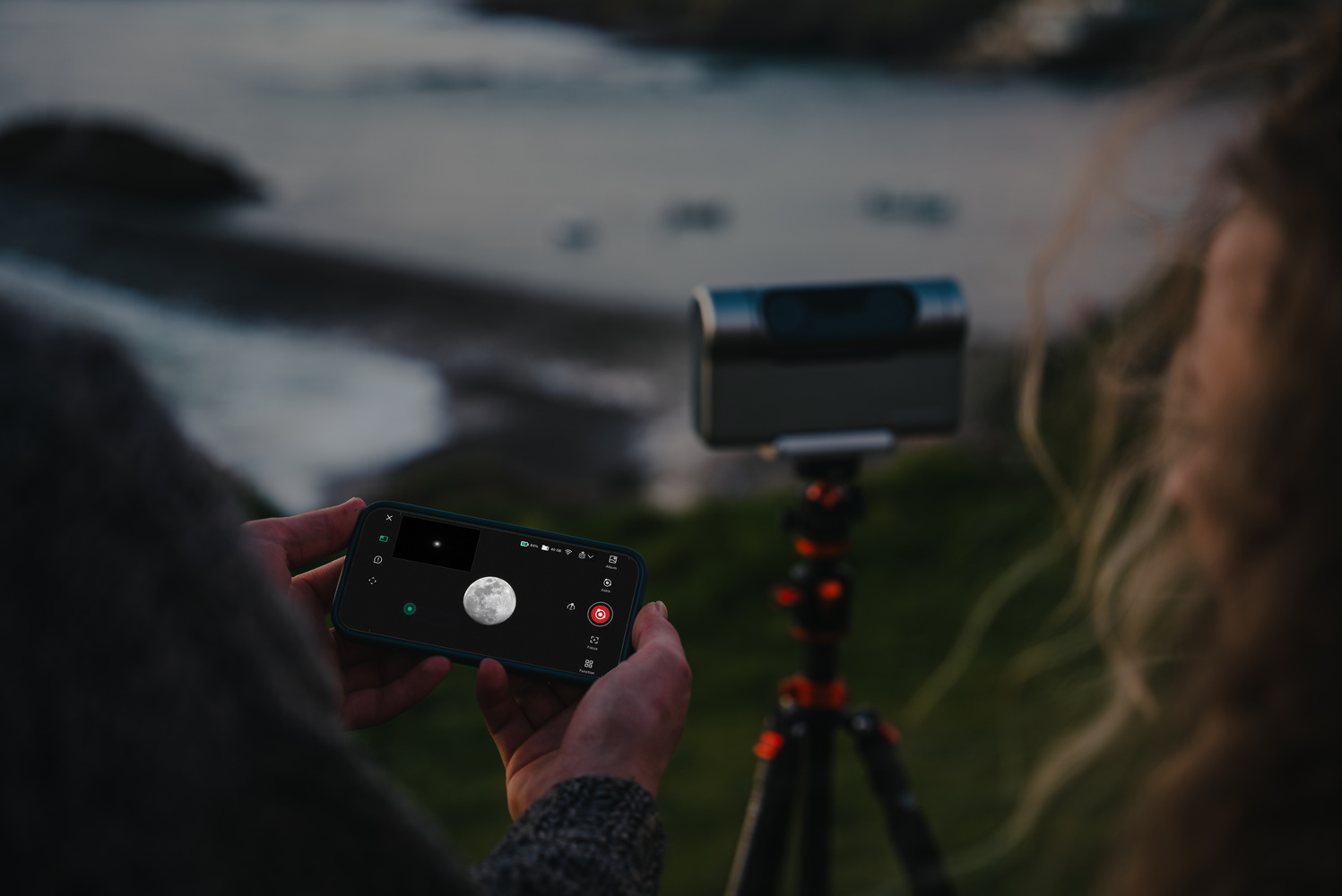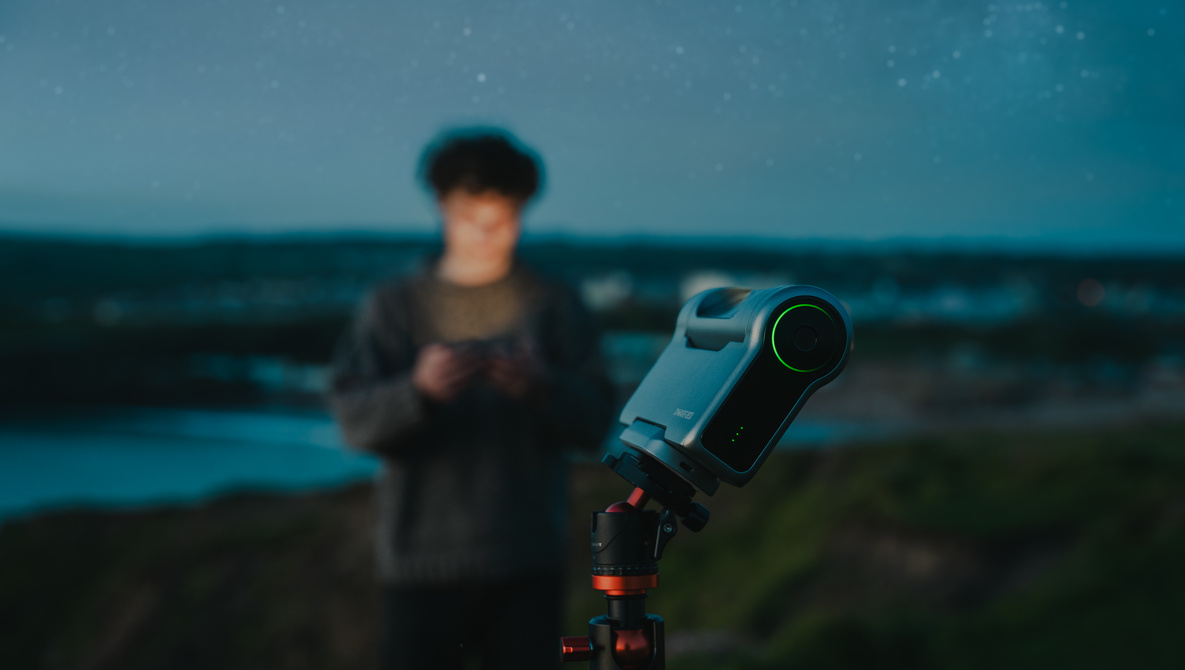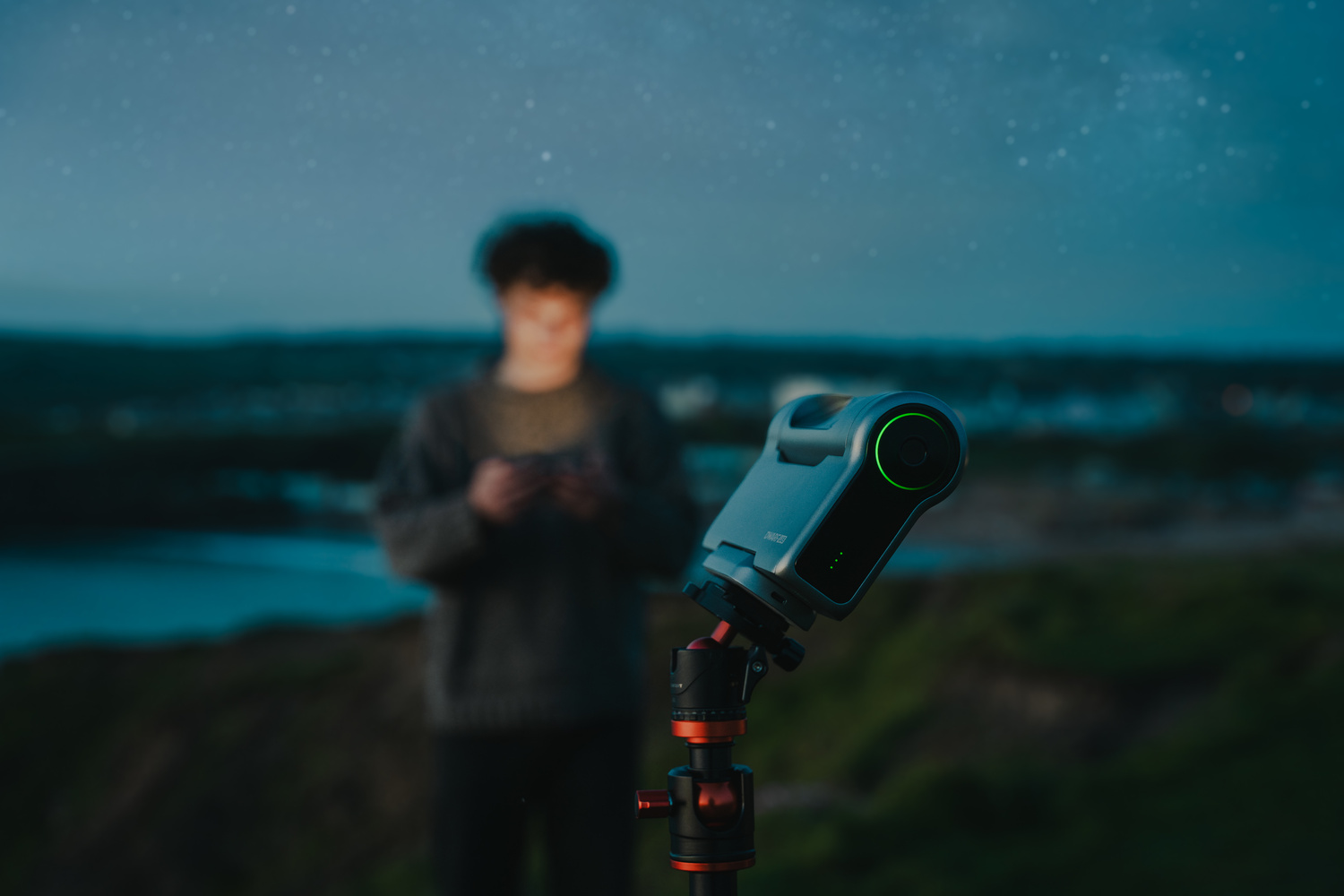Following the success of the very popular Dwarf II Telescope, DwarfLabs has announced the brand-new and upgraded Dwarf 3 Smart Telescope. This compact and portable telescope is very exciting and is currently set to ship this September.
Every clear night (which has been rare this year so far!), I love to admire the stars, as well as capture astro images such as the Milky Way and Aurora Borealis, but I have always wanted to expand into other styles of astrophotography, such as Solar and Deep Sky. This is where the Dwarf 3 will help me achieve those goals.
The Dwarf 3 will automatically track the sky for you via their app, similar to a GoTo system on a conventional telescope but without much of the fuss! This device is comparable in size and weight to a dictionary, weighing in at only 1.3 kg, meaning it is incredibly portable compared to larger telescope setups and opens up the world of astrophotography to the masses.
The upgraded hardware and firmware make the Dwarf 3 a miniature powerhouse. It features an upgraded high-sensitivity Sony sensor, which helps to keep noise to a minimum, and you can combine that with the machine’s AI-powered noise reduction.
Some of the many new benefits of the Dwarf 3 include the ability to schedule your target and leave your device running solo to capture images while you go inside and enjoy a nice cup of cocoa or get a few hours of sleep. Another new feature is being able to create astro-mosaics and gigapixel panoramas, which can be stitched together via their AI software.
For any budding astrophotographers or those who want to travel lighter than usual, the Dwarf 3 looks incredibly exciting, and September cannot come soon enough for me! The price is incredibly affordable when compared to other telescope rigs or smart telescopes on the market and is only $489.

Are you as excited for this as I am? Let us know in the comments below.









This is an expensive way to do a relatively easy job badly. That being said, I hope it has the effect of getting more people to appreciate the night sky.
This is not meant as shade, I can imagine the prospect of not having to know anything to be alluring for people to whom the barrier to entry needs to be on the floor, but the results from this and the plethora of other similar products produce such comparatively bad results.
I hope the type of people who want to truly see the night sky resist this type of thing and go down a more effective route, but for people who wouldn’t otherwise get out under the night sky I hope this gadget does that for them.
I feel that is harsh considering this model is not out yet so you do not know what results this will produce.
However, yes if it can allow people to enjoy the night sky more, it will be a win and a people have to start somewhere.
Not trying to sound arrogant, but one doesn’t need to see the results if one knows how the physics of light works, and then applies those principles to the device in question based solely on it’s physical parameters and stated functionality.
It’s like if I said “this two-cylinder eco-compact car cannot beat a purpose-built dragster in a drag race.” I don’t need to run that test to know the outcome if I understand the physics involved.
In astrophotography you can’t infinitely stack short exposures taken with a slow lens and a small sensor and attain comparable results as the same bulk integration taken with fewer much longer exposures using more optimal equipment (or even just a 12 year old Canon Rebel and a kit zoom on a small equatorial sky tracker). Due to the nature of the sparse light signal coming from dim objects (most of the things people are taking astrophotos of) you run into an issue where in any given short exposure you might not actually capture any photons from parts of an object you’re trying to image, or not enough to hit your sensor’s pixels’ threshold for registering a signal. This limits you to only capturing the parts of an object with the highest apparent brightness.
No photons = no signal = no image
And it doesn’t matter how many minutes or hours of short exposures you use. Too short to capture a signal applies to 1000 frames the same as it applies to 10.
These are the “unknown unknowns” that people aren’t made aware of before dropping their money on expensive gadgets like this. The addition of AI in this device is a bit worrisome as well, makes me wonder if it’s going to fall back on the same AI-generative fakery that Samsung phones use to generate photos of the moon. A well documented and tested phenomenon for what it’s worth (potential responders, feel free to Google it first).
That, in my opinion, makes this device and similar devices a dead-end for potential astrophotographers wanting to truly see what’s out there. For many consumers it will be money wasted, an all-too-familiar hobby-killer in the amateur astronomy space.
where exactly have you seen the results it produces ?
Please see my response to the article’s author if you would like to fill in one of your knowledge gaps surrounding astrophotography, and learn why your reply is effectively a non-sequitur.
Got it now. I can see clearly
You’re just guessing
Not as clear as the new Dwarf 3 Smart Telescope!!